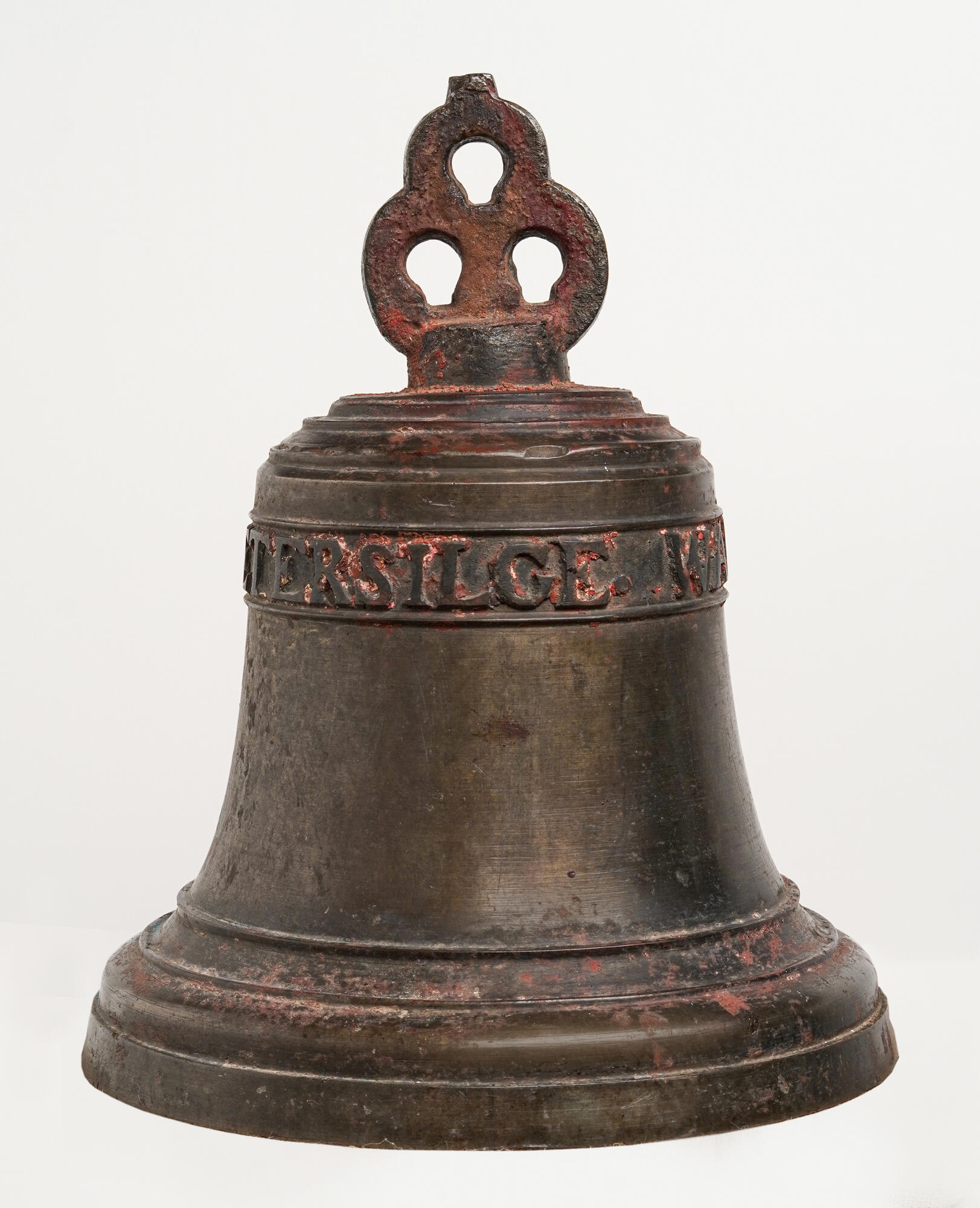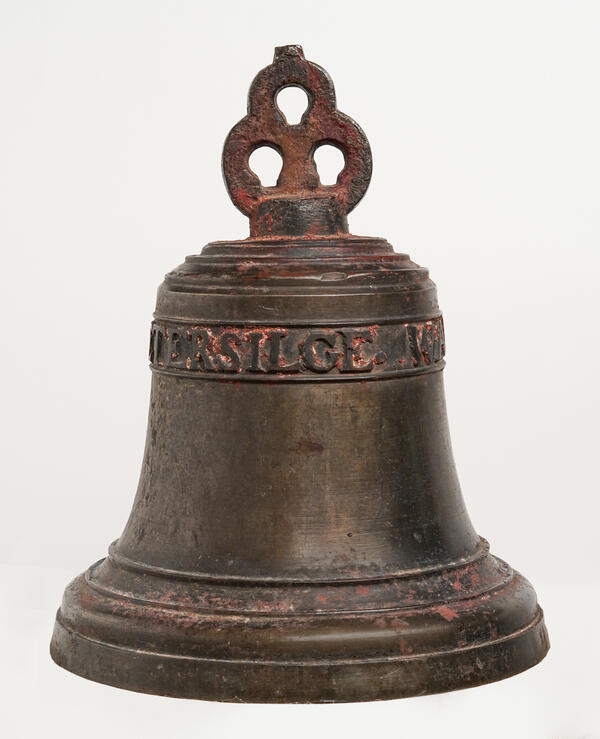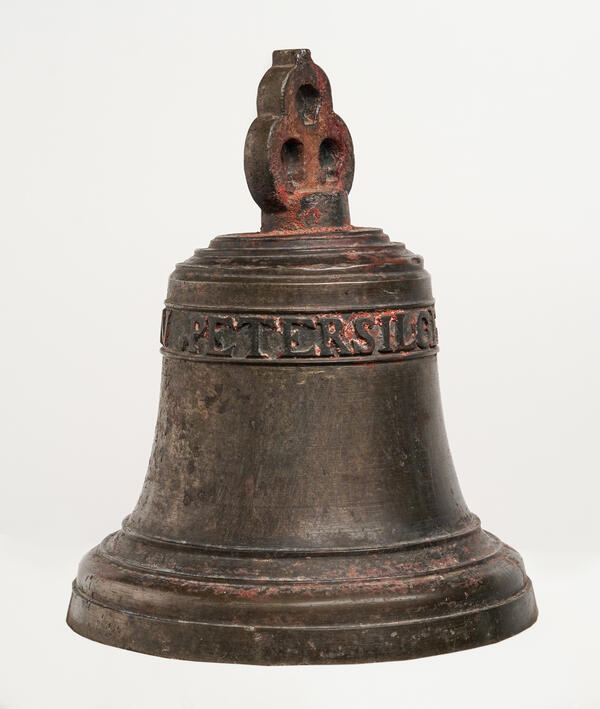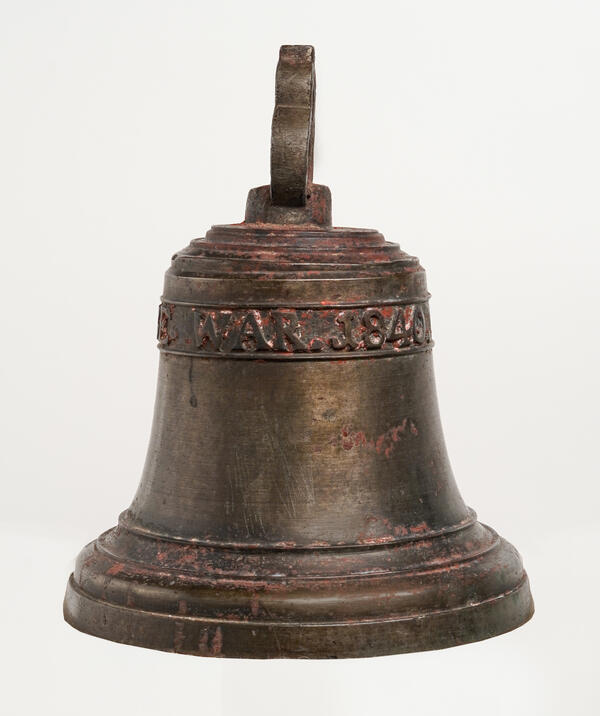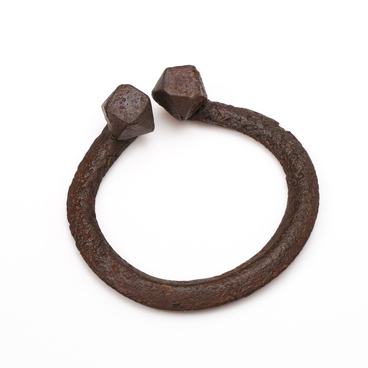The bell is an important part of Russian culture. It has been a part of Orthodox worship, and since ancient times it has been sounded during nationwide celebrations and emergencies. Bells heralded the arrival of noble guests and the attack of foes, and were a beacon for ships lost in the fog and stranded wayfarers. They summoned to fires and to a public meeting. The bell was widely regarded as a talisman and bell-ringing — as protection from evil forces. Every church or temple complex, and sometimes even chapels, had their own belfries with various kinds of bells. The numerous village and country belfries were usually staffed by self-taught ringers, and during Holy Week, anyone could ring the bells.
The bell from the Church of the Conception of St John the Baptist in the Gorodishche village on display belongs to the category of the small bells. They are used to make festive trezvon (triple-peal), including at weddings. The bell has a cannon in the form of a three-petaled flower for hanging. On the upper part of the body there is an inscription running around the circumference: I. N. PETERSILGE. WAR. 1840. The body of the bell is widened and thickened in the lower part. It is decorated with three rows of narrow hoops. Inside the bell is a drop-shaped iron clapper.
The Church of the Conception of John the Baptist is located in the center of the ancient village of Gorodishche. The village is now part of the Kolomna city. The village is located on the bank of the Kolomenka River. Topographically suitable for a fortified settlement, this place was inhabited by our ancestors in ancient times. The Church of the Conception of John the Baptist in Gorodishche is an example of post-Mongolian architecture and is one of three extant monuments of that time. The other two are the Church of St. Nicholas in the village of Kamenskoe in Naro-Fominsk area and the Church of the Nativity of the Blessed Virgin in the village of Gorodnya in the Tver Region. The numerous similar features of these buildings (no piers, no pilasters dividing the facades, similar apse cornices, white-stone consoles, corner pylons and specific masonry features) enable experts to classify them under the same category. The half-height walls of the quadrangular frame without external pilasters and the altar apses, made of roughly hewn limestone blocks, are what is left of the ancient building of the 14th century.
The bell from the Church of the Conception of St John the Baptist in the Gorodishche village on display belongs to the category of the small bells. They are used to make festive trezvon (triple-peal), including at weddings. The bell has a cannon in the form of a three-petaled flower for hanging. On the upper part of the body there is an inscription running around the circumference: I. N. PETERSILGE. WAR. 1840. The body of the bell is widened and thickened in the lower part. It is decorated with three rows of narrow hoops. Inside the bell is a drop-shaped iron clapper.
The Church of the Conception of John the Baptist is located in the center of the ancient village of Gorodishche. The village is now part of the Kolomna city. The village is located on the bank of the Kolomenka River. Topographically suitable for a fortified settlement, this place was inhabited by our ancestors in ancient times. The Church of the Conception of John the Baptist in Gorodishche is an example of post-Mongolian architecture and is one of three extant monuments of that time. The other two are the Church of St. Nicholas in the village of Kamenskoe in Naro-Fominsk area and the Church of the Nativity of the Blessed Virgin in the village of Gorodnya in the Tver Region. The numerous similar features of these buildings (no piers, no pilasters dividing the facades, similar apse cornices, white-stone consoles, corner pylons and specific masonry features) enable experts to classify them under the same category. The half-height walls of the quadrangular frame without external pilasters and the altar apses, made of roughly hewn limestone blocks, are what is left of the ancient building of the 14th century.
